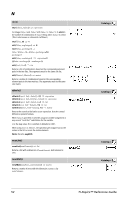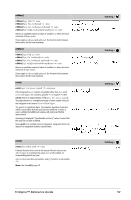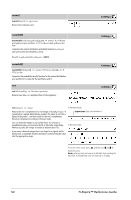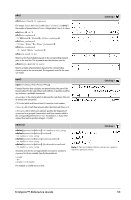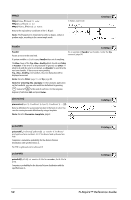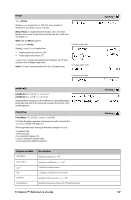Texas Instruments NS/CLM/1L1/B Reference Guide - Page 60
Catalog >, normCdf, normPdf
 |
UPC - 033317190256
View all Texas Instruments NS/CLM/1L1/B manuals
Add to My Manuals
Save this manual to your list of manuals |
Page 60 highlights
norm( ) norm(Matrix) ⇒ expression Returns the Frobenius norm. normCdf() normCdf(lowBound,upBound[,m,s]) ⇒ number if lowBound and upBound are numbers, list if lowBound and upBound are lists Computes the normal distribution probability between lowBound and upBound for the specified m and s. For p(X upBound), set lowBound = .9E999. normPdf() normPdf(XVal[,m,s]) ⇒ number if XVal is a number, list if XVal is a list Computes the probability density function for the normal distribution at a specified XVal value for the specified m and s. not not BooleanExpr ⇒ Boolean expression Returns true, false, or a simplified form of the argument. Catalog > Catalog > Catalog > Catalog > not Integer1 ⇒ integer In Hex base mode: Returns the one's complement of a real integer. Internally, Integer1 is converted to a signed, 64-bit binary number. The value of each bit is flipped (0 becomes 1, and vice versa) for the one's complement. Results are displayed according to the Base mode. Important: Zero, not the letter O. You can enter the integer in any number base. For a binary or hexadecimal entry, you must use the 0b or 0h prefix, respectively. Without a prefix, the integer is treated as decimal (base 10). In Bin base mode: If you enter a decimal integer that is too large for a signed, 64-bit binary form, a symmetric modulo operation is used to bring the value into the appropriate range. £ ¡ ¢ To see the entire result, press and then use and to move the cursor. Note: A binary entry can have up to 64 digits (not counting the 0b prefix). A hexadecimal entry can have up to 16 digits. 54 TI-Nspire™ Reference Guide






